When I became a curator at the National Maritime Museum in Greenwich I was amazed to discover the extent of the collection held behind closed doors – shedloads (literally) of art and artefacts largely unknown to the general public. This situation is true of most such institutions: the Tate owns a vast warehouse of world-class art in south London that could easily fill an entire turbine hall; though anyone can make an appointment to look at it, I expect most people don’t, and it’s such a shame so little can be displayed. At the Maritime Museum there was something of a running joke that a large part of its unseen collection consisted of works by the prolific, if moderately talented, seafaring artist John Everett: there were over 1,000 of his oil paintings, around 1,000 works on paper, and more than 350 sketchbooks – in fact, everything he had ever painted or drawn with a ship or a boat in it. He had bequeathed it all to the Museum, and most of it was seemingly unexhibitable.
Now, however, a small proportion sees the light of day in Bristol. Everett hailed from Dorset and encouraged his friends and art teachers to follow him down to the sea and paint. ‘Inquisitive Eyes’ explores that landscape, and the painterly results of those friendships. And it’s all so fascinating because the thing that was most interesting about Everett was his friends: in the 1890s he studied at the Slade School of Art in London alongside the young trailblazers Augustus John and William Orpen. And the man who taught them painting was Philip Wilson Steer, one of the most exciting of the so-called ‘London Impressionists’; and the man who taught them drawing was Henry Tonks – in the opinion of another Slade student, Bernard Leach, ‘a second-class artist […] but a good draughtsman and perhaps the best teacher in all England’. Such was the effect of Everett’s hospitality and encouragement that by October 1910 Vanessa Bell (herself, briefly, a Slade student) was writing thus to her sister from Purbeck: ‘The whole country was like a Steer and so was the day. I expected to see many Sladites perched on the surrounding hills like myself, but luckily the season was too late for them and all have disappeared.’
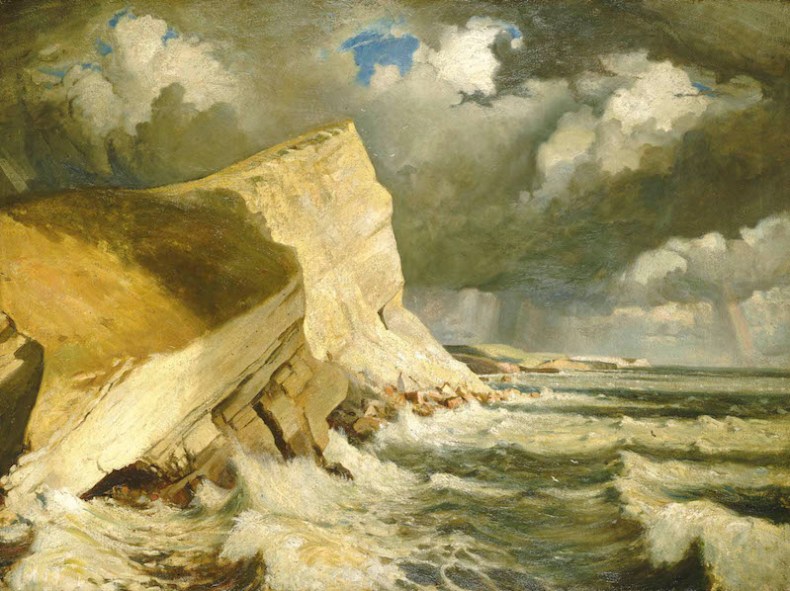
Gad Cliff, Worbarrow Bay, Dorset (1910), John Everett. National Maritime Museum, Greenwich
Purbeck does shine forth like some green and promised land from the many varied paintings gathered here. The exhibition opens with work by Frederick Whitehead – not a Slade man, but a Warwickshire artist who studied in Paris at the Académie Julian in the 1880s. In Dorset in the early 1890s he met and befriended Thomas Hardy, whose novels were making ‘Wessex’ famous, their popularity already encouraging artists down to the West Country to paint out of doors. The influence here was Impressionism. In the hands of Steer, it comes off very well; in the hands of Tonks, it has a tendency to drip treacle. For Everett, there is evidence of much experimentation, of months spent by and on the water, watching the clouds and the sea and the sun as the light and the weather change and transform over the course of the day. Occasionally, as in the large 1910 canvas Gad Cliff, Worbarrow Bay, Dorset, he captures it magnificently: sunlight bounces off the white cliffs in the foreground, while in the distance rain falls from grey clouds.
Also rather wonderful are the series of little pen and wash sketches that Orpen gave as gifts to Everett. Tonks would later reflect that he thought the talented Irishman was ‘not…at his best in [his] portraits clever as he certainly was’, but that ‘in an earlier period like Rowlandson he might have become an illustrator of the various humours of people’. One certainly sees this in Orpen’s sketches here – anomalous as they are in a show dedicated to Edwardian Wessex. (The best of them, from 1899, shows two female bathers entering the sea at Étretat – across the Channel from Dorset in Normandy.) Orpen’s other contribution to the exhibition is his 1900 portrait of Augustus John, now in the National Portrait Gallery. Sadly, his accompanying swagger portrait of Everett was too fragile to leave the National Maritime Museum; the two really deserve to be seen together, as they happily are in Gwen Yarker’s accompanying catalogue.
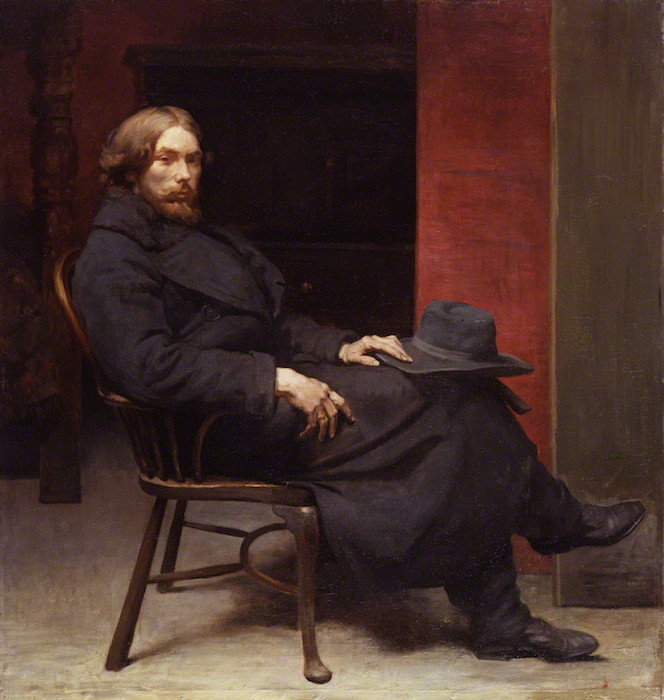
Augustus John (1900), William Orpen. National Portrait Gallery, London
It is John who provides the other best-known work in the show: The Blue Pool, now in Aberdeen Art Gallery and Museums. It was Everett who helped John find a new home for his large family at Alderney Manor, and it was here, at a flooded clay pit in 1911, that we see British art breaking free from the shackles of Impressionism and embracing the vibrancy and life and colour of what Roger Fry the year before had dubbed Post-Impressionism. It’s all Gauguin and Matisse and the south of France – hardly southern England at all. ‘It was cruel to leave Provence,’ John had told Lady Ottoline Morrell in 1910, and you feel that the artist hasn’t really left at all.
‘Inquisitive Eyes’ culminates with the Bloomsbury Group. Like John, Fry was in thrall to France. ‘When one gets into France,’ he told Vanessa Bell in 1911, ‘and the sun is shining on little towns, all grey-brown roofs and grey walls, and the poplars are golden in the autumn light, I must be rather happy at the mere sight. It’s always been so with me and always must, I suppose.’ But when Fry couldn’t be in France – and when he wasn’t at the Slade lecturing students on the Renaissance – he could be at Studland Bay instead. His Studland Bay, Dorset (1911), is richly different from almost everything that has come before; it would, I am sure, have left Tonks and Steer speechless. It was here too that Vanessa Bell painted one of the really great early works of English modernism. Her Studland Beach (1911) isn’t in this show: it would have made a great conclusion to a fascinating, if sometimes slightly eclectic exhibition.
‘Inquisitive Eyes: Slade Painters in Edwardian Wessex, 1900–1914’ is at the Royal West of England Academy, Bristol until 12 June.
From the April issue of Apollo: preview and subscribe here
Unlimited access from just $16 every 3 months
Subscribe to get unlimited and exclusive access to the top art stories, interviews and exhibition reviews.

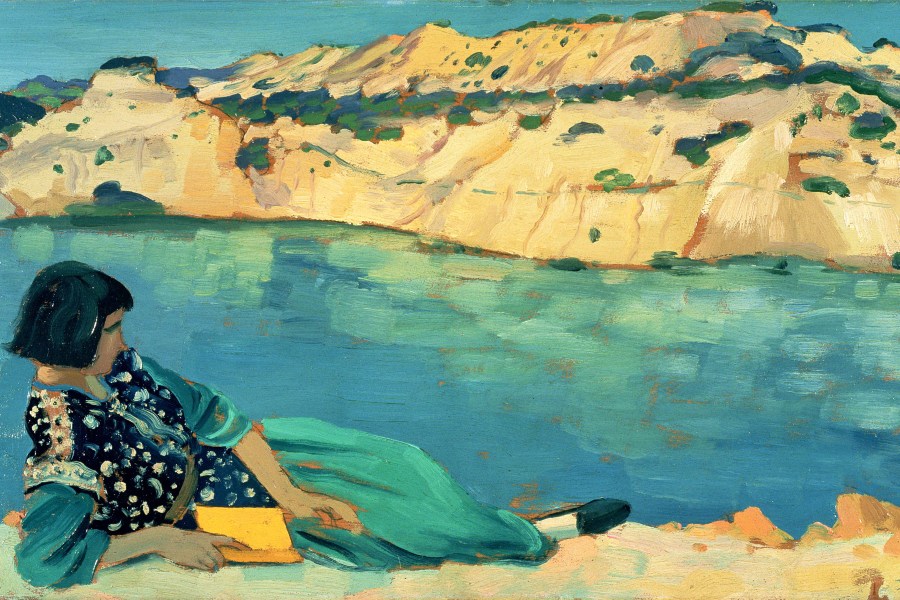
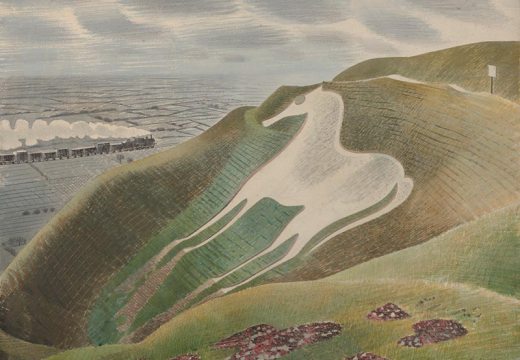
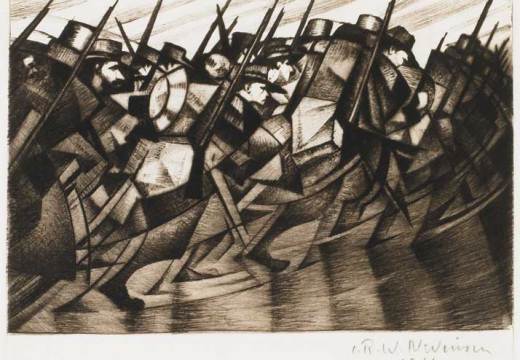
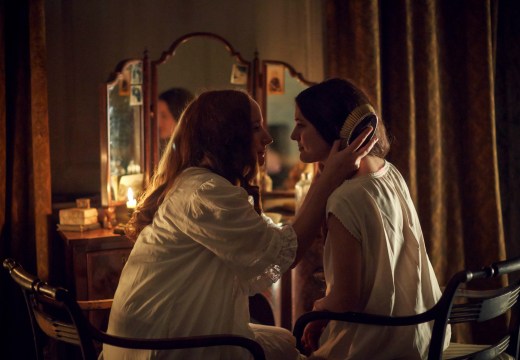









![Masterpiece [Re]discovery 2022. Photo: Ben Fisher Photography, courtesy of Masterpiece London](http://www.apollo-magazine.com/wp-content/uploads/2022/07/MPL2022_4263.jpg)
It’s time for the government of London to return to its rightful home